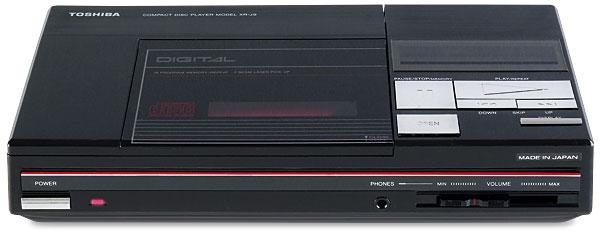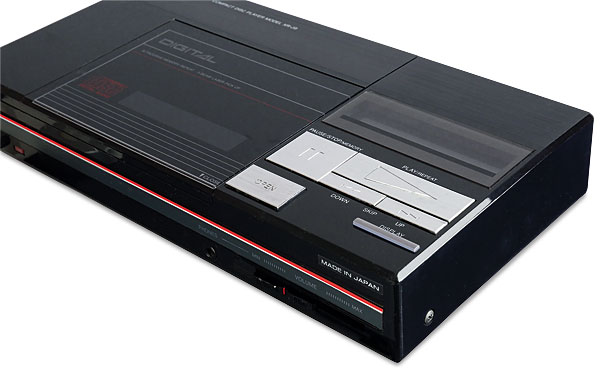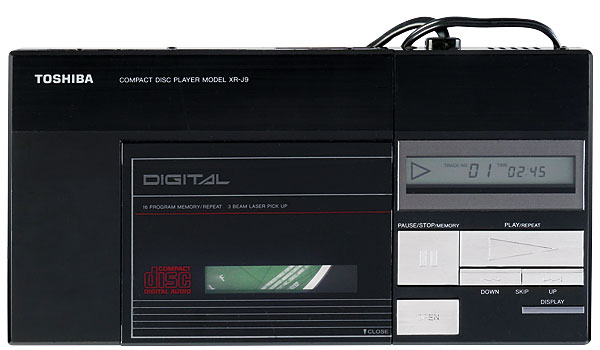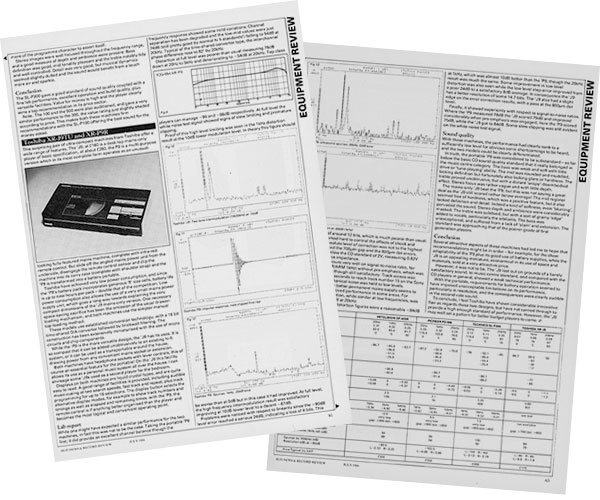Toshiba XR-J9 CD Player

 Compact, clever and priced to entice, this quirky little late-'80s machine caught the imagination of those buying into digital for the first time. How does it shape up today?
Compact, clever and priced to entice, this quirky little late-'80s machine caught the imagination of those buying into digital for the first time. How does it shape up today?
When Toshiba unveiled its lineup of new CD players in 1986 it was clear the format had come of age. Just three years after the first machines were launched onto the European market they'd gone from being exotic and expensive to something so accessible there was little point in any keen listener not owning one.
One of the CD players to arrive from Toshiba in 1986 was the XR-J9 reviewed here. Rationalised and simplified until it cost less than £160 to buy, the machine would go on to sell in vast quantities and become a 'must have' for those building a CD-based system on a budget.
Giant Steps
In the early 1980s the Toshiba (Tokyo Shibaura) corporation was an industrial giant with interests in many sectors. Yet to outsiders it appeared to be puzzlingly reluctant to exert its might in the field of domestic equipment – despite having both the technical capability and production capacity to do so. The company was known in some circles as 'the sleeping giant of video' because it allowed rivals Matsushita (Panasonic) and Sony to dominate the market, releasing only a few models itself. It showed obvious restraint when it came to audio too. Toshiba's Aurex sub-brand produced the market-leading System 15 miniature [HFN Apr '16] in 1979, but little came to market after that. When CD arrived, Toshiba was there from the start with its XR-Z70 and XR-Z90 players, but comparatively few were sold compared to the quantities shifted by market leaders Philips and Sony.

The 1986 programme was an attempt to remedy the situation. The XR-J9 and XR-P9 (essentially the same player but presented differently) were well made, fully featured and aggressively priced. They were well reviewed too, showing that taking the cost out of a CD player didn't necessarily make it a poor performer. Although the XR-J9 looks like a slightly bulky portable it isn't. It operates from mains power only and has no facility to run off batteries. The slightly smaller XR-P9 could be operated from an optional battery, but its odd shape and substantial battery pack made it awkward to carry around, unlike Sony's more pocket-focused 'Discman' models.
Top Shot
Like a portable, the XR-J9 did include a headphone amplifier with its own volume control so it could be used as a desktop player on its own. However, the tethered signal cables showed that it was really designed to be connected to a larger system.
Top loading eliminated the complex drawer mechanism and motor found in conventionally built models but the machine's compact size was the result of something else entirely. This was the use of a new range of CD player-specific integrated circuits housed in miniature surface-mounted packages, which came from Toshiba's own factories.

Toshiba also made the miniaturised three-beam laser pick-up block for the player, meaning they were produced 'in house' to nearly the same extent as the best efforts from Philips. The new ICs meant a basic, but functional, player could be built around a single time-shared DAC with no digital filter and no oversampling.
Two For The Money
It was the DAC that held the most interest in technical terms, because like the early models from Philips it was a 14-bit type. This was done for reasons of power saving and cost reduction – the supporting technical literature explained that eliminating two bits allowed the circuit to operate at a quarter of the speed. Unlike Philips, however, there was no attempt to 'restore' the lost resolution with oversampling – the XR-J9 was one of the few true '14x1' players.
One would imagine this compromise would have an adverse effect on sound quality, but few listeners (or reviewers for that matter) even noticed. This was partly due to the fact that many of the early 16-bit DACs did not offer perfect resolution of the least two significant bits (the ones the Toshiba DAC ignored) in any case. Technically, a reduction in dynamic range from a theoretical 96dB to 84dB and an indifferent (by CD standards) claimed distortion figure of 0.01% were the signatures of Toshiba's 14-bit process. But it should be remembered that the figures were still better than those that could be obtained from the best records and cassettes.
There wasn't room inside the XR-J9 for the elaborate analogue filters so beloved of many Japanese CD player designers, although the machine's analogue stages had still been laid out with considerable care.

Toshiba produced a number of other models based around the same architecture as the XR-J9, the most notable being the XR-V12, which looked more like a 'normal' full-sized CD player of the era. More bizarre was the RT-7096, a large portable radio cassette with what looked like a complete XR-J9 (suitably modified for battery operation) built into the top. Units of this type would become commonplace in the years that followed, but in 1986 they were still high status luxuries which were rarely encountered.
With so few controls the XR-J9 shouldn't be anything other than simplicity itself to operate. This is true in a basic sense, but as is so often the case with seemingly simple things, complexity lies beneath the surface. One can, for example, skip tracks forward and backward in the usual manner, but to search within a track you must hold down the play key along with the forward or the reverse key. The graphics on the fascia give no clue to this unconventional logic, so unless you read the manual you may never know the feature exists.
Double Play
Meanwhile, there is no repeat key, the function being engaged by pressing the play key once more during playback. A tiny legend appears on the display to show that repeat mode is on – this function tends to engage (or clear) itself if the search function is used as well. Track programming is possible and is based around pressing and holding the pause button to enter the track selection sequence. There is no stop key; rather, you press pause twice to shut everything down.
All this can prove frustrating. Surely it would have been no more difficult to make the functions work in a conventional way. Still, I'm sure most owners were happy to drop in a disc, press the big play button and let the recording run to the end.























































